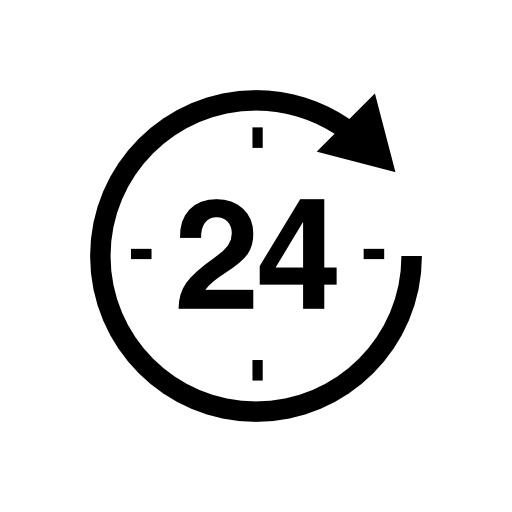There are many different conditions that are recognized as mental illnesses. According to BPDFamily.com, the more common types include:
- Anxiety disorders: People with anxiety disorders respond to certain objects or situations with fear and dread, as well as with physical signs of anxiety or nervousness, such as a rapid heartbeat and sweating. An anxiety disorder is diagnosed if the person's response is not appropriate for the situation, if the person cannot control the response, or if the anxiety interferes with normal functioning. Anxiety disorders include generalized anxiety disorder, post-traumatic stress disorder (PTSD), obsessive-compulsive disorder (OCD), panic disorder, social anxiety disorder, and specific phobias.

- Mood disorders: These disorders, also called affective disorders, involve persistent feelings of sadness or periods of feeling overly happy, or fluctuations from extreme happiness to extreme sadness. The most common mood disorders are depression, mania, and bipolar disorder.
- Psychotic disorders: Psychotic disorders involve distorted awareness and thinking. Two of the most common symptoms of psychotic disorders are hallucinations -- the experience of images or sounds that are not real, such as hearing voices -- and delusions -- false beliefs that the ill person accepts as true, despite evidence to the contrary. Schizophrenia is an example of a psychotic disorder.
- Eating disorders: Eating disorders involve extreme emotions, attitudes, and behaviors involving weight and food. Anorexia nervosa, bulimia nervosa and binge eating disorder are the most common eating disorders.
- Impulse control and addiction disorders: People with impulse control disorders are unable to resist urges, or impulses, to perform acts that could be harmful to themselves or others. Pyromania (starting fires), kleptomania (stealing), and compulsive gambling are examples of impulse control disorders. Alcohol and drugs are common objects of addictions. Often, people with these disorders become so involved with the objects of their addiction that they begin to ignore responsibilities and relationships.
- Personality disorders: People with personality disorders have extreme and inflexible personality traits that are distressing to the person and/or cause problems in work, school, or social relationships. In addition, the person's patterns of thinking and behavior significantly differ from the expectations of society and are so rigid that they interfere with the person's normal functioning. Examples include antisocial personality disorder, borderline personality disorder, obsessive-compulsive personality disorder, and paranoid personality disorder.
Other, less common types of mental illnesses include:
- Adjustment disorder: Adjustment disorder occurs when a person develops emotional or behavioral symptoms in response to a stressful event or situation. The stressors may include natural disasters, such as an earthquake or tornado; events or crises, such as a car accident or the diagnosis of a major illness; or interpersonal problems, such as a divorce, death of a loved one, loss of a job, or a problem with substance abuse. Adjustment disorder usually begins within three months of the event or situation and ends within six months after the stressor stops or is eliminated.
- Dissociative disorders: People with these disorders suffer severe disturbances or changes in memory, consciousness, identity, and general awareness of themselves and their surroundings. These disorders usually are associated with overwhelming stress, which may be the result of traumatic events, accidents, or disasters that may be experienced or witnessed by the individual. Dissociative identity disorder, formerly called multiple personality disorder, or "split personality", and depersonalization disorder are examples of dissociative disorders.
- Factitious disorders: Factitious disorders are conditions in which physical and/or emotional symptoms are created in order to place the individual in the role of a patient or a person in need of help.
- Sexual and gender disorders: These include disorders that affect sexual desire, performance, and behavior. Sexual dysfunction, gender identity disorder, and the paraphilias are examples of sexual and gender disorders.
- Somatoform disorders: A person with a somatoform disorder, formerly known as psychosomatic disorder, experiences physical symptoms of an illness even though a doctor can find no medical cause for the symptoms.
- Tic disorders: People with tic disorders make sounds or display body movements that are repeated, quick, sudden, and/or uncontrollable. (Sounds that are made involuntarily are called vocal tics.) Tourette's syndrome is an example of a tic disorder.
Other diseases or conditions, including various sleep-related problems and many forms of dementia, including Alzheimer's disease, are sometimes classified as mental illnesses because they involve the brain.
Author: Skip
 BPDFamily.com provides support, education, tools, and perspective to individuals with a loved one affected by Borderline Personality Disorder. BPFamily is a non-profit, co-op of nearly 75,000 volunteer members and alumni formed in 1998. We welcome you to join our free 24 hour on-line support community with its nearly 3 million postings and grow with us as we learn to live better lives in the shadow of this disorder. For more information or to register, please click here. www.bpdfamily.com
BPDFamily.com provides support, education, tools, and perspective to individuals with a loved one affected by Borderline Personality Disorder. BPFamily is a non-profit, co-op of nearly 75,000 volunteer members and alumni formed in 1998. We welcome you to join our free 24 hour on-line support community with its nearly 3 million postings and grow with us as we learn to live better lives in the shadow of this disorder. For more information or to register, please click here. www.bpdfamily.com 














No comments:
Write comments